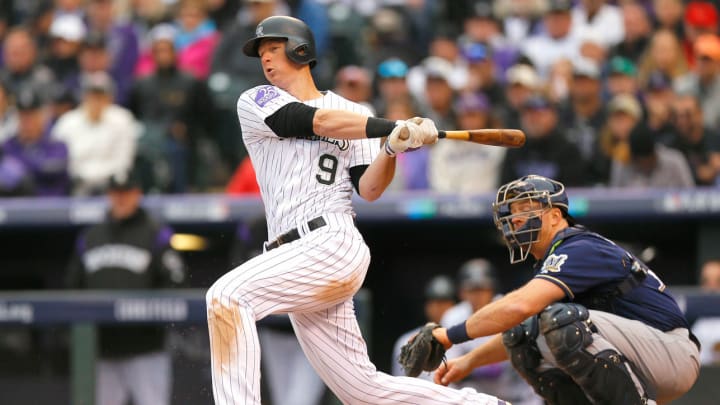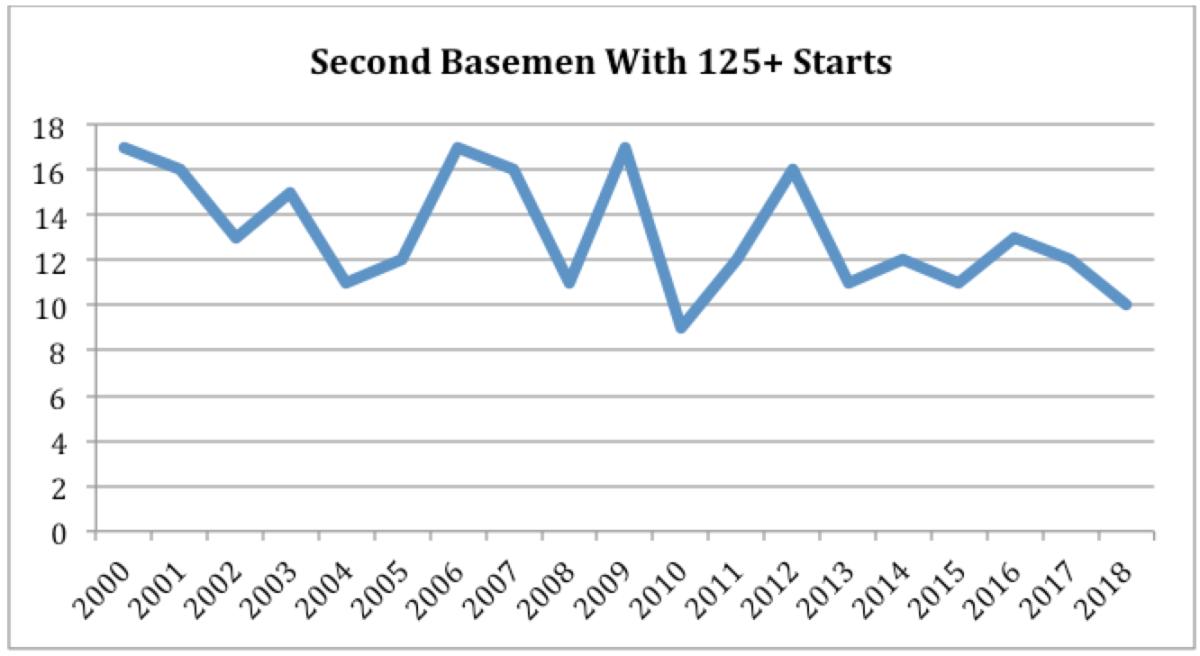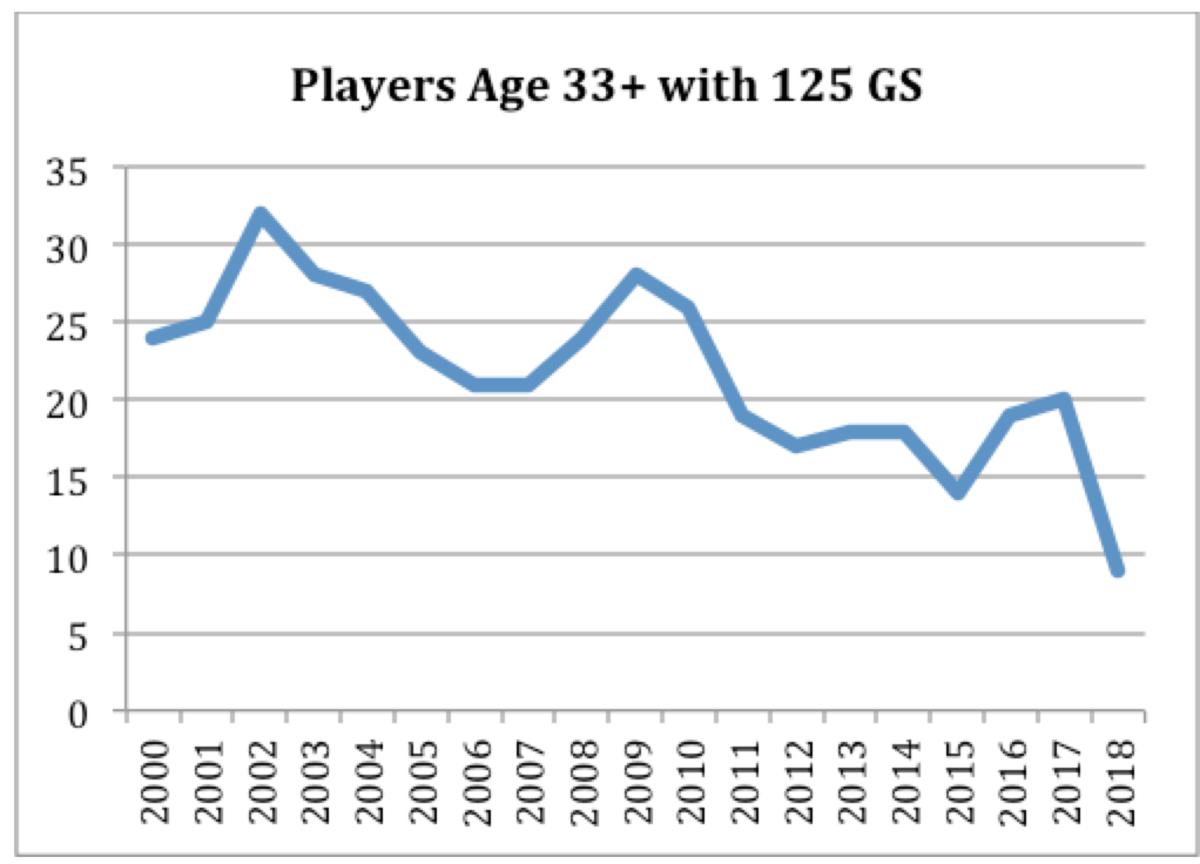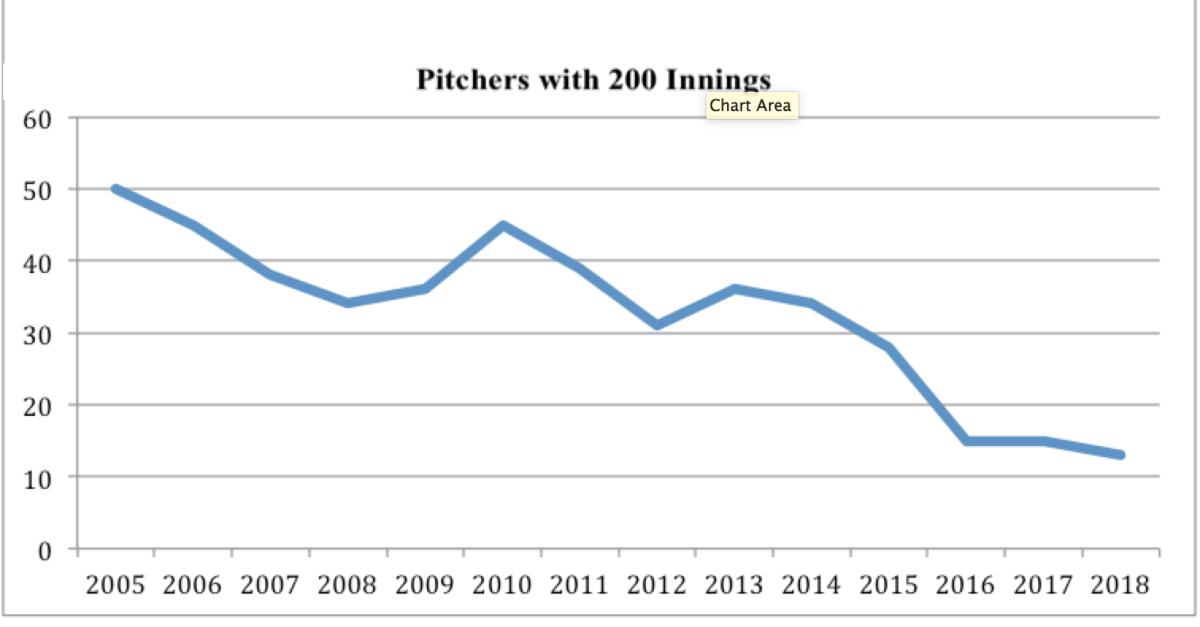The Uber of Baseball: The Rise of Young, Versatile Labor Is an Ominous Sign for Older Players

The gig economy has come to baseball, and it is not all good news for players.
Just ask D.J. LeMahieu, Jed Lowrie and just about all free agents, especially second basemen, who no longer are counted on to fill traditional, everyday jobs. Baseball players are learning the hard lesson many Americans have learned about a gig economy: pay goes down when the work becomes more flexible and less steady.
LeMahieu and Lowrie are former All-Star second basemen who signed with New York teams without a commitment to play second base every day. In this gig economy they and fellow second baseman Brian Dozier (who signed for just one year with the Nationals) are worth less guaranteed money than free agents Omar Infante or Luis Castillo not too long ago.
A gig economy disrupts the traditional full-time job paradigm in favor of short-term work and independent contractors. Data from the Federal Reserve last summer found that nearly one out of every three adults engaged in gig work, either as a primary or secondary source of income. Think Uber drivers, temp workers and, lately, furloughed federal employees trying to stay afloat financially.
For ballplayers, the gig economy divides work among more players, which means less pay for players. A record 1,270 players appeared in major league games last year. That’s a 15.8% increase in jobs since 1998, the first season with 30 teams. Yet the average salary went down last year for the first time since 2004—while revenues again went up.
What’s happening?
1. Supply has gone up.
The pool of available major league quality players is growing, thanks to improved training and nutrition on both the amateur and professional levels and the further specialization of how the game is played. A two-pitch power pitcher with control problems, for instance, has a better chance pitching in the big leagues today than he did 20 years ago.
2. Advanced analytics seek any incremental edge.
That means job-sharing in the form of platoons and “super utility” jobs for position players and limited exposure for both starters and relievers.
Take Los Angeles outfielder Joc Pederson, 26, as an example. Pederson hits 58 points lower against lefthanded pitchers than righthanders, so he has been given a gig job. Had he played outfield for the Dodgers in the 1960s, as Willie Davis did, Pederson would have been a full-time player. Davis hit 42 points worse against lefties than righties at the same age as Peterson. Yet by age 26, Davis had five seasons with 550 or more plate appearances. Pederson has only one such season.
It’s easier for the Dodgers to give at-bats against lefties to somebody else than to commit to sticking with Pederson in hopes that he improves on his career .181 average against lefties.
3. Baseball teams have lost confidence in players in their mid-30s to be everyday contributors.
It started with testing for PEDs (2004), continued with the banning of amphetamines (2006) and has accelerated in the past five years as velocity and spin have increased, a trend that favors younger players.
One top club executive called the emerging system “the puzzle piecing of the roster.”
“Strategically more teams want to use depth,” the executive said. “The increasing emphasis on gaining advantage in matchups creates this deeper roster concept. In terms of creating supply, I think the industry is a little better at scouting and definitely better at development. And that includes development on the major league level.
"Also, there are a lot of imperfections in amateur baseball, but in general players are getting better instruction and better habits. College baseball has become a very underrated teaching environment.”
When the Mets introduced Lowrie, 34, at a news conference, the line of questioning veered as much toward what he didn’t get as to what he did get (two years, $20 million). Lowrie was asked if he agreed that as a veteran free agent with an All-Star resume he would have received more money and years just a few years ago, before the gig economy hit.
“I think that argument could be made,” he said.
In fact, there is no denying the argument that veteran free agents have lost value. Look how Lowrie, LeMahieu and Dozier compare to Infante, who was a free agent in 2013, and Castillo, who was a free agent in 2007. I included their WAR per season heading into free agency and the value of their contracts adjusted for inflation to better compare dollars.
Free Agent Second Basemen Comparison
Player | Age | WAR | Career OPS+ | Contract Length | 2019 Dollar Amount |
|---|---|---|---|---|---|
Brian Dozier (2018) | 31 | 3.4 | 108 | 1 year | $9 million |
Jed Lowrie (2018) | 34 | 1.6 | 105 | 2 years | $20 million |
D.J. LeMahieu (2018) | 30 | 2.2 | 92 | 2 years | $24 million |
Omar Infante (2013) | 31 | 1.4 | 93 | 4 years | $32.3 million |
Luis Castillo (2007) | 31 | 2.3 | 94 | 4 | $29.9 million |
Infante (Royals) and Castillo (Mets) were signed for more years and more guaranteed money (but with a lower average annual value) and as everyday players at second base.
Yankees GM Brian Cashman told LeMahieu to bring many different gloves to spring training, which means the former everyday second baseman will train at all four infield positions. Lowrie, too, could see time with the Mets at all four infield positions.
This kind of job-sharing has taken off in recent years as analytics have gone mainstream. Set lineups are dying. Consider the second base position. Last year only six players started 140 games at second base—half as many as did just two seasons ago.
Let’s drop the minimum to 125 starts at second base. From 2000–07 it was common for at least half the teams in baseball to deploy such an everyday second basemen. Last year there were only 10 such regulars. In each of the past six years the majority of teams have not used such an everyday player at second base. Here you can see the decline in teams relying on a regular second basemen:

The decline of all full-time jobs is even more precipitous when you look at older players. In 2002, at the height of The Steroid Era, 32 players age 33 and older started at least 125 games. Only nine such players were given such regular work last year—a 72% decline in 16 years. Only two National League players 33 and older started 125 games last year: Nick Markakis, an All-Star who just re-signed with the Braves on a one-year, $6 million contract, and Joey Votto. Here is the plunge in confidence teams have in older players:

The dropoff last year was stunning: a whopping 26% one-year decline in total starts by players age 33+, hitting their lowest level since the advent of 30 teams in 1998. Players age 33 and older started fewer games last year than they did even in 1982, when there were four fewer teams and 9,720 fewer possible starts. So much for modern medicine and training extending careers.
Let that sink in: older players are less useful now than at any point in at least a generation. Think about that when you think about free agents Bryce Harper or Manny Machado signing contracts beyond seven years—ones that would require their clubs to pay them elite dollars at age 33 and older.
Clubs prefer younger players because they generally mean cheaper, healthier players with more defensive range, more positional versatility, and faster bats to deal with the high-octane pitching environment of today. Of the 11 best hitters last year against pitches 95 mph and faster, all of them played in their age 30 or younger season:
2018 Highest Batting Average vs. 95+ MPH (Min. 50 results)
PLayer | Age | Average |
|---|---|---|
1T. Andrelton Simmons | 28 | .394 |
1T. Francisco Lindor | 24 | .394 |
3. Anthony Rendon | 28 | .391 |
4. Freddie Freeman | 28 | .380 |
19 | .370 | |
6. J.D. Martinez | 30 | .368 |
7. Miguel Rojas | 29 | .367 |
8. Adam Eaton | 29 | .364 |
9. Elvis Andrus | 29 | .352 |
10. Jason Heyward | 28 | .349 |
11. Nicholas Castellanos | 26 | .347 |
“The game is faster, and the fear of young players has gone away,” said the club executive when asked about the decline of relying on older players. “Teams used to be skeptical of young players. Now the players coming in at 22, 23, 24 are little more advanced than they used to be. So now when you have people competing for jobs would you rather have the really good 22-year-old or the declining 33-year-old? The WAR for 22-and-under and the WAR for 35-and-older are tilting.”
Nowhere does the gig economy seem more obvious than in starting pitching. Work for starters continues to decline. The driving forces are analytics—especially understanding the gap between a starter facing the same hitter a third time and a reliever facing that hitter for a first time—and a power-dependent game that encourages starters not to “pace” themselves but to adopt a relief mentality of going hard and going to their “kill” pitches even at the start of games.
Last year only 13 pitchers threw 200 innings, the fewest in any full season since the mound distance was set at 60 feet, six inches in 1889. The number of 200-inning pitchers has dropped 54% in just three years, from 28 to 13. You don’t have to go back to the 1960s to see how much starting pitching has changed. This graph shows the number of 200-inning pitchers has declined 74% in just 13 years:

It was only three years ago that teams shelled out five-year contracts for “innings eaters” Jordan Zimmermann ($110 million), Jeff Samardzija ($90 million) and Wei-Yin Chen ($80 million). All three contracts have been busts. Teams no longer value innings eaters in the same way. This year’s version of the innings eater, Lance Lynn, signed for just three years and $30 million, and Dallas Keuchel can’t find a job.
Free Agent Comparison
Player | Age | W-L | ERA+ | FIP | Contract |
|---|---|---|---|---|---|
Dallas Keuchel | 30 | 76–63 | 108 | 3.72 | Unsigned |
Lance Lynn | 31 | 82–57 | 110 | 3.67 | $30 million |
Wei-Yin Chen | 29 | 46–32 | 110 | 4.14 | $80 million |
Jeff Samardzija | 30 | 47–61 | 96 | 3.84 | $90 million |
Jordan Zimmermann | 29 | 70–50 | 118 | 3.40 | $110 million |
Players don’t have to like this gig economy, but they better get used to it, at least until they address economic issues in the next Collective Bargaining Agreement. (As jobs and pay for veteran players shrink, the union must find a way to get more money to players when they are most valuable – in the beginning of their careers). The gig economy isn’t going anywhere in the short term for one reason: it works in the clubs’ favor.
There is no better example of how a team leverages the gig economy than the Los Angeles Dodgers. They have won two consecutive National League pennants without any player starting 140 games in a season and without any pitcher throwing more than 175 innings in a season. In five offseasons under Andrew Friedman, they have not signed any of the 20 free agents who signed for more than $80 million.
What they have done best is to tap into a growing supply of players to divide up the work, especially by leveraging the 10-day DL to rotate players. Only six teams in Dodgers history used more than 50 players to get through a season. Four of those six teams occurred in the past four years: 2015, 2016, 2017 and 2018—all four seasons under Friedman. And in each of those past four seasons the Dodgers won the NL West and drew more than 3.7 million people.
Disruptive and successful, the Dodgers are the Uber of Major League Baseball. They are masters of the growing gig economy.
